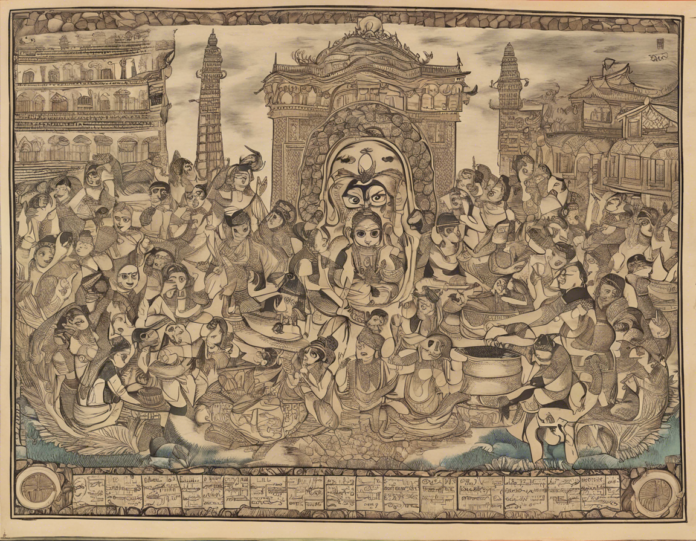Boishakh Mash in English 2024
Boishakh Mash, also known as the Bengali New Year, is the first month of the Bengali calendar. In 2024, Boishakh Mash will be celebrated from April 15th to May 14th. This auspicious month marks the beginning of the agricultural year and is widely observed in Bangladesh and the Indian state of West Bengal, as well as among Bengali communities around the world.
History and Significance
Boishakh Mash holds great cultural and historical significance in the Bengali community. It is a time to bid farewell to the old year and welcome the new one with hope, joy, and prosperity. The day of the Bengali New Year, also known as “Pohela Boishakh,” is celebrated with vibrant festivities, including traditional music, dance, art, and food.
Traditions and Customs
During Boishakh Mash, people dress in traditional attire, with women wearing white saris with red borders (known as “Taat” sarees) and men wearing panjabis. Streets come alive with processions, fairs, and cultural programs. The day begins with traditional rituals, such as visiting temples or offering prayers for a prosperous year ahead.
Food and Cuisine
One of the highlights of Boishakh Mash is the traditional Bengali cuisine that is prepared and shared during the celebrations. Special dishes such as panta bhat (fermented rice), ilish maach (Hilsa fish), shorshe maach (mustard fish curry), pitha (sweet rice cakes), and mishti (sweets) are enjoyed by families and communities.
Festivals and Events
Several festivals and events are organized during Boishakh Mash to celebrate the Bengali New Year. In Bangladesh, the day of Pohela Boishakh is marked with colorful rallies, cultural programs, and the traditional “Mangal Shobhajatra” procession. In West Bengal, India, people visit temples, organize fairs, and participate in cultural events like “Rabindra Jayanti” to honor the Nobel laureate Rabindranath Tagore.
Conclusion
Boishakh Mash in English 2024 is a time of joy, celebration, and cultural pride for the Bengali community. It symbolizes new beginnings, unity, and the rich cultural heritage of the Bengali people. As the month unfolds, let us embrace the spirit of Boishakh Mash with enthusiasm and positivity, cherishing our traditions and coming together to welcome the new year with hope and happiness.
Frequently Asked Questions (FAQs)
1. What is the significance of Boishakh Mash in the Bengali culture?
Boishakh Mash holds great cultural and historical significance as the first month of the Bengali calendar. It is a time to celebrate new beginnings, unity, and the rich heritage of the Bengali community.
2. How is Pohela Boishakh celebrated?
Pohela Boishakh, the day of the Bengali New Year, is celebrated with traditional rituals, cultural programs, fairs, processions, and special dishes. People dress in traditional attire, visit temples, and exchange greetings with loved ones.
3. What are some traditional dishes served during Boishakh Mash?
Special dishes like panta bhat, ilish maach, shorshe maach, pitha, and mishti are prepared and enjoyed during Boishakh Mash. These dishes are symbolic of the rich culinary heritage of the Bengali culture.
4. How do people in Bangladesh and West Bengal celebrate Boishakh Mash?
In Bangladesh, people celebrate Boishakh Mash with colorful rallies, cultural programs, and the Mangal Shobhajatra procession. In West Bengal, India, celebrations include temple visits, fairs, cultural events, and honoring Rabindranath Tagore on Rabindra Jayanti.
5. What is the significance of wearing Taat sarees and panjabis during Boishakh Mash?
Wearing white Taat sarees with red borders and panjabis symbolizes purity, tradition, and cultural identity during Boishakh Mash celebrations. It is a way for people to showcase their pride and connection to their Bengali roots.





